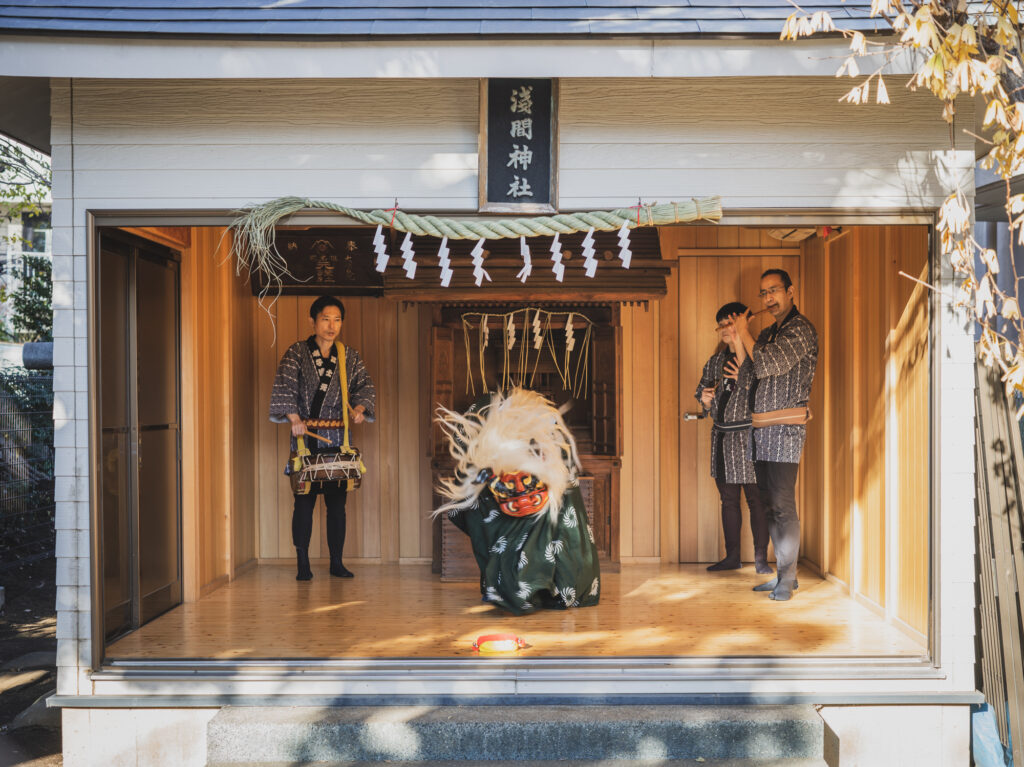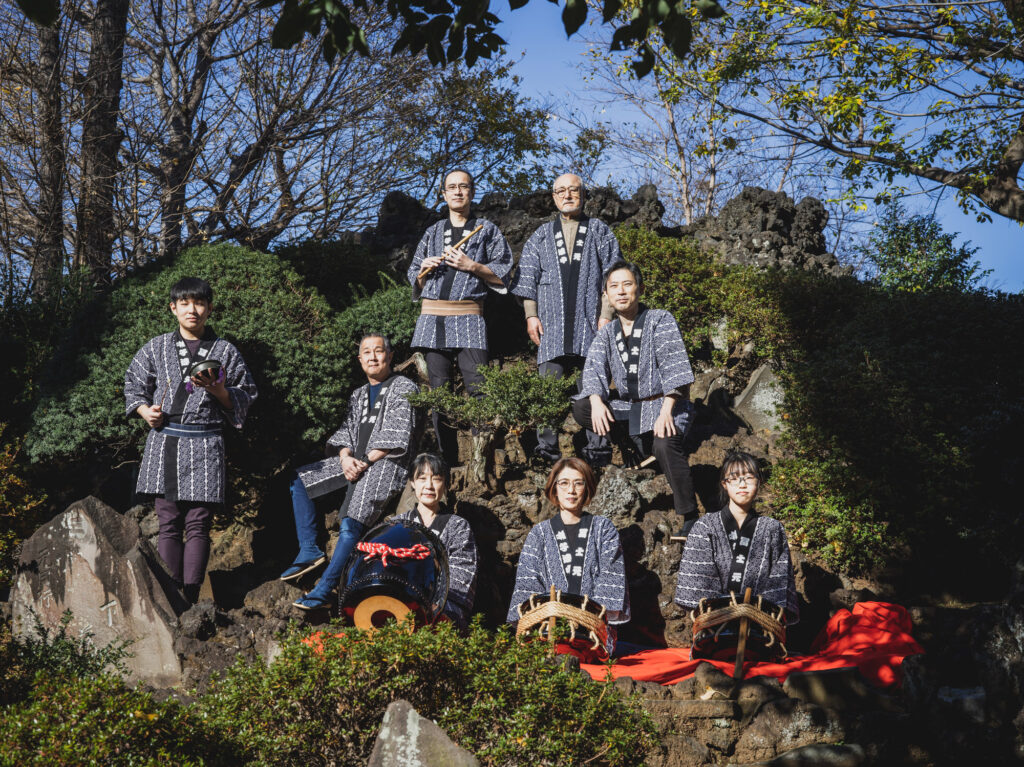
冨士元囃子連中
Fujimoto Hayashi Renchu
冨士元囃子・寿獅子
Fujimoto-bayashi and Kotobuki-jishi
平成14年 豊島区指定無形民俗文化財
明治の中ごろから、東京郊外の農村には江戸の祭囃子を演奏する囃子連が多数輩出されました。冨士元囃子連中もそのひとつで、明治30年頃に現豊島区高松の長崎富士塚(国指定文化財)の講元であった一家から発祥しました。
東京の祭囃子の特徴である五人囃子の形態をとり、神田流大間囃子に属します。曲目は、屋台・昇殿・鎌倉・四丁目・玉入れ・屋台の組曲で演奏されます。かつて長崎地域が農村であった頃の、のどかな笛の音と、締め太鼓の小気味よいテンポを聞かせるのが特徴です。
冨士元囃子と道具一式は豊島区の無形・有形民俗文化財として指定されています。
冨士元囃子には、付随芸として「寿獅子」「大黒舞」「おかめ・ひょっとこ」などがあります。これらは昔より祝福芸として正月や祝いの座敷などで演じられてきたものです。
毎年9月第2土曜日曜の長崎神社例大祭では、屋台で囃子を演奏しながら町内をまわり、祭りを盛り上げています。
*毎年7月第1土曜・日曜 長崎富士塚開山
*冨士元囃子の稽古は月1回行っています。興味のある方歓迎いたします。
(場所)浅間神社内長崎富士塚(高松2−9−3)

From the middle of the Meiji Period (late 1800s) musical troups performing Edo festival music began to form in great numbers in the rural villages surrounding Tokyo. Fujimoto-bayashi began as one of these groups, formed at the turn of the 20th with the family of the head of the religious association for the Nagasaki Fujizuka, a mound representing Mount Fuji in present-day Toshima’s Takamatsu area.
Based on the traditional Tokyo festival musical accompaniment, the troupe has five members, and is affiliated with the Kanda-Oma style. Their repertoire begins with Yatai, then Shoden, Kamakura, Shichome, Tamaire, and closes with Yatai again.
The music hearkens back to when the Nagasaki region of Toshima was an agricultural village, with an idyllic flute and brisk shime-daiko drum tempo. There is also a celebratory Kotobuki-jishi lion dance.In 2002, the troupe became a Toshima Designated Intangible/Tangible Folk Cultural Property.
Every year at the Nagasaki Shrine Festival on the second weekend in September, the troupe sits in a movable float decorated with lanterns and performs while moving around the neighborhood, getting everyone into the festival spirit.
*First weekend in July, Nagasaki Fujizuka Mountain Opening (Place) Nagasaki Fujizuka located on the grounds of Asama Shrine (Takamatsu 2-9-3)
*Fujimoto-bayashi rehearses once a month. Interested people are welcome to attend. (Place) Takamatsu 2-9-3, Toshima

